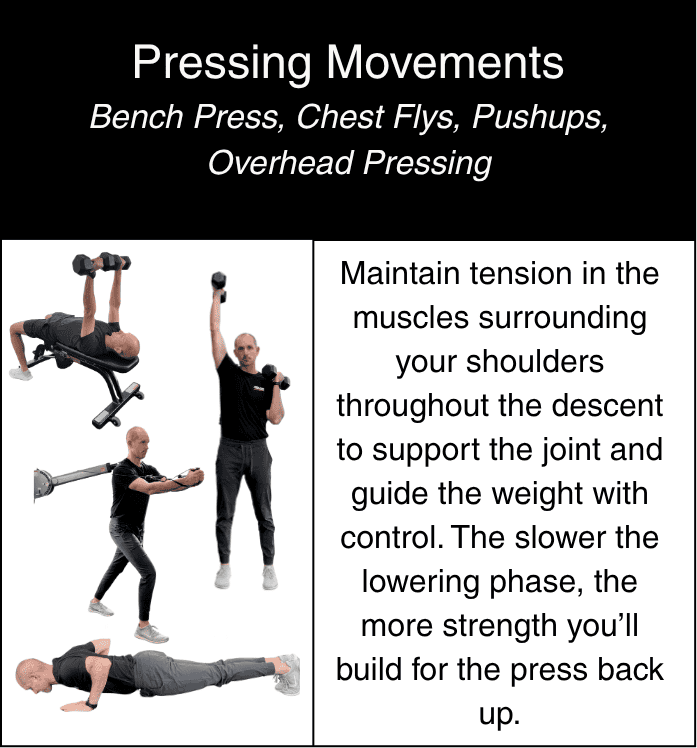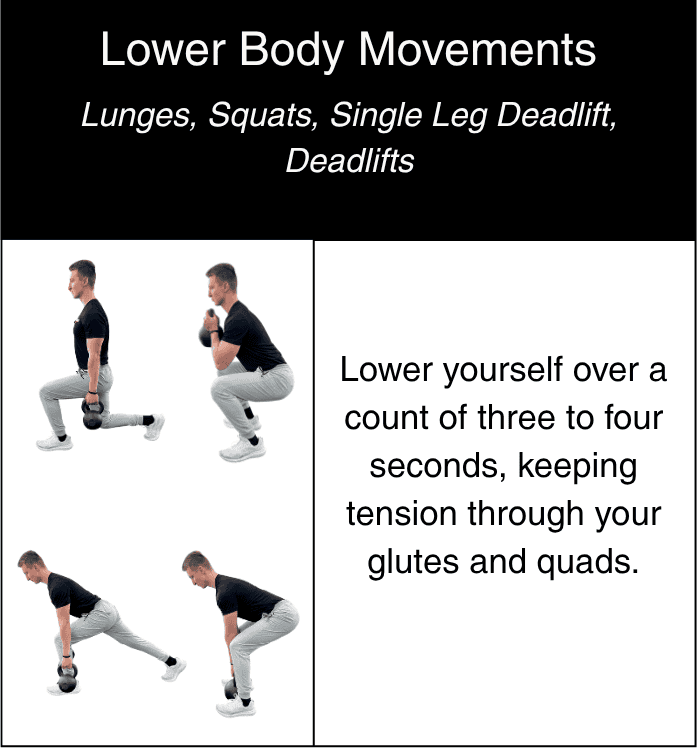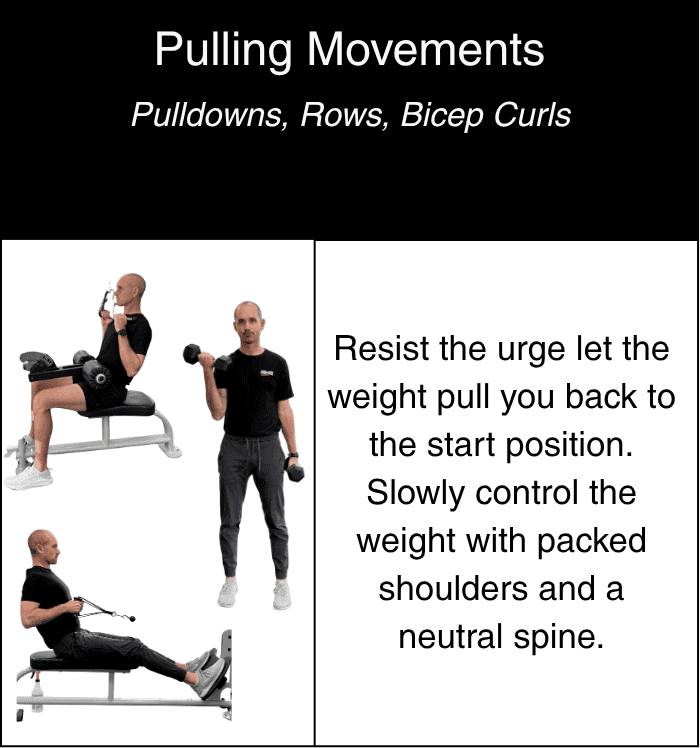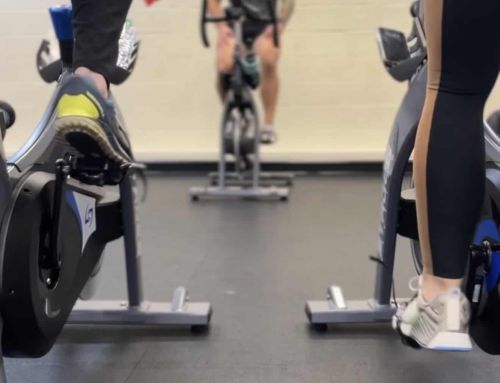
By The One on One Team
Last Updated: 11/09/25
The Benefits of Eccentric Training: How Slowing Down Improves Strength and Joint Health
Have you ever heard us cue you to “maintain control through the full movement” or “slow your reps down”? There’s a reason we emphasize those cues. Moving slowly and with control strengthens your muscles and protects your joints, two key ingredients for staying strong and resilient over time.
In this Focus Point, we’ll highlight the benefits of controlling the eccentric phase of each exercise and illustrate how to put it into practice.
The Basics: What Is Eccentric Training?
Eccentric training focuses on the portion of an exercise where the muscle works as it lengthens. This controlled lowering phase challenges the muscle to resist gravity, building strength and stability through the full range of motion. Every exercise includes three phases:
- Concentric: the lifting or shortening phase (e.g., standing up from a squat, curling the dumbbell up).
- Isometric: the holding phase (e.g., pausing at the top).
- Eccentric: the lowering or lengthening phase (e.g., descending into the squat, lowering the dumbbell).
Think of eccentric control as your body’s built-in braking system. It allows you to decelerate the weight smoothly, keeping your muscles engaged from start to finish.
Why It Matters
A muscle produces the greatest amount of force in the eccentric phase which promotes muscle growth and an increase in strength. In addition to these benefits, eccentric training helps:
- Improve Joint Health: Controlled lowering reduces impact and protects connective tissues, especially in the knees, shoulders, and spine.
- Maintain Proper Form: Slowing down keeps your form honest, allowing stabilizers to engage and maintain alignment.
- Increase Flexibility: Muscles that can lengthen under load become not just stronger, but more supple and resilient.
- Boost Mind-Muscle Connection: Moving slowly enhances awareness, helping you feel which muscles are working.
Applying Eccentric Training to Common Movements
Here’s how controlled lowering looks in common movement patterns:
Takeaway
The eccentric phase plays a key role in building strength and protecting joint health. Controlling the lowering portion of each movement improves stability, balance, and movement quality over time. Be intentional about controlling the eccentric phase of each exercise and notice how it increases the intensity and effectiveness of your workout.







